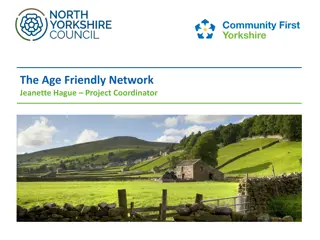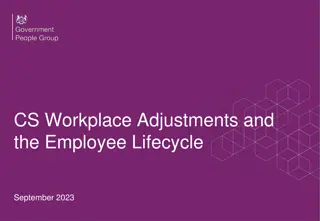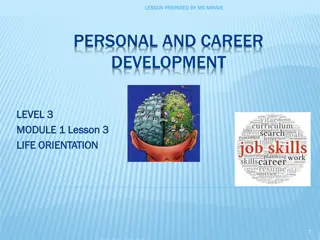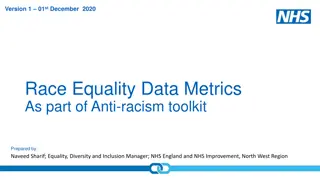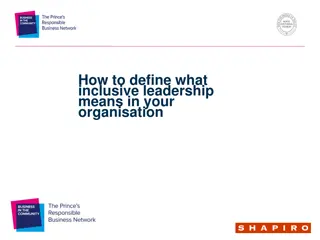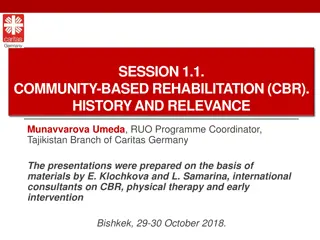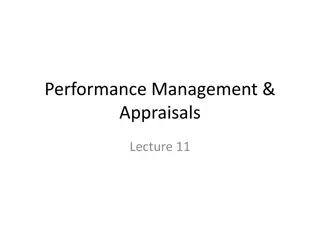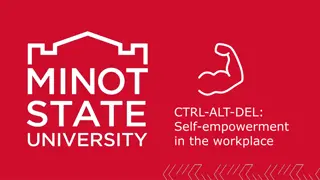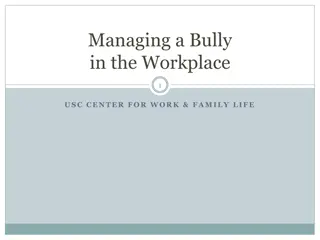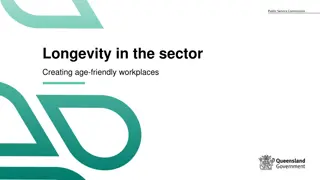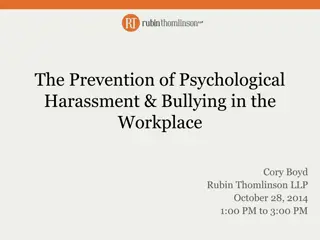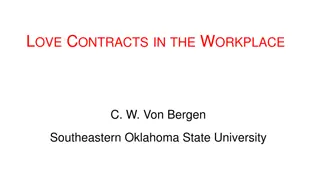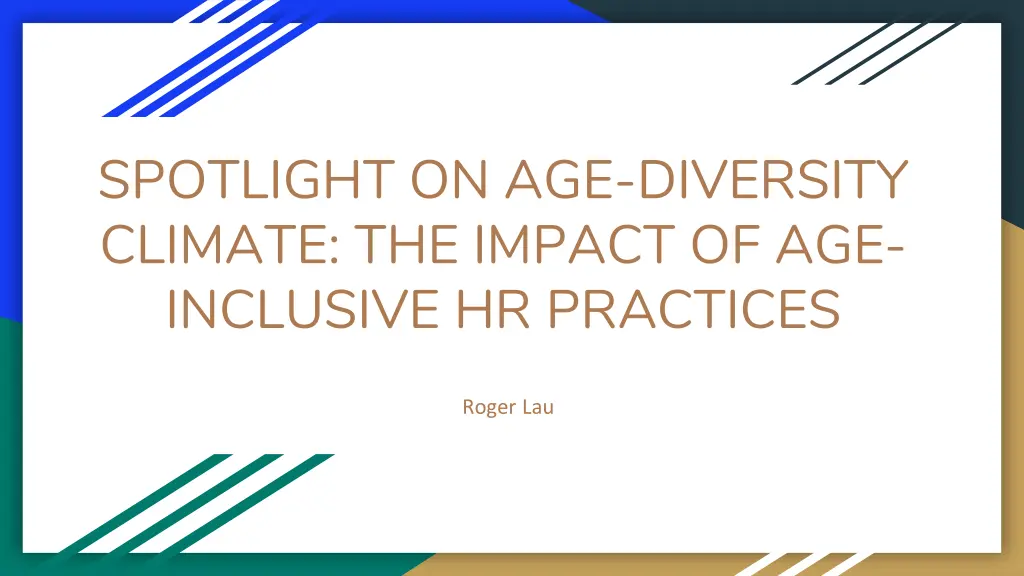
Impact of Age-Inclusive HR Practices on Organizational Climate
Discover the significance of age diversity in the workplace and the benefits of age-inclusive HR practices. Explore methodologies to validate age diversity climate and its impact on company outcomes. Join the discussion on integrating research to foster a positive age-diversity climate and enhance organizational performance.
Download Presentation

Please find below an Image/Link to download the presentation.
The content on the website is provided AS IS for your information and personal use only. It may not be sold, licensed, or shared on other websites without obtaining consent from the author. If you encounter any issues during the download, it is possible that the publisher has removed the file from their server.
You are allowed to download the files provided on this website for personal or commercial use, subject to the condition that they are used lawfully. All files are the property of their respective owners.
The content on the website is provided AS IS for your information and personal use only. It may not be sold, licensed, or shared on other websites without obtaining consent from the author.
E N D
Presentation Transcript
SPOTLIGHT ON AGE-DIVERSITY CLIMATE: THE IMPACT OF AGE- INCLUSIVE HR PRACTICES Roger Lau
So what is age- diversity climate?
The benefits of age- inclusive HR system
Scholars should strive for a best possible match between the climate they study and the effects they predict in order to gain a high predictive validity of their model. (Ehrhart, and Macey)
Previous Research General Diversity Work Climate Pro Diversity Climate Kopelman (1990) theories of signaling and collective sensemaking Interactional model of cultural diversity (IMCD)
Methodology 1. Take example of work done by general diversity climate and older employees to develop a sound and empirical validation at organizational level of analysis on age diversity climate.
Methodology 2. Validate a measure of age-inclusive human resource practices as a potential precursor of an organizational age-diversity climate.
Methodology 3. Age-diversity climate as a performance forerunner on the organizational level of analysis.
Methodology 4. Create a model that assumes an indirect relationship of age-inclusive HR practices via age- diversity climate on company outcomes.
Purpose/Goals 1. Introducing and validating age-inclusive HR practices as a novel HR system for achieving a distinct strategic goal (i.e., fostering a positive age-diversity climate) 2. By exploring how age-diversity climate as a new mediator translates its potential effects on firm-level outcomes such as productivity or collective turnover intentions. 3. Aims to integrate research on both diversity climate and the HRM performance through testing two three-path mediation relationships in a sample of 93 companies with 14,260 employees.
6 Hypothesis 1. Age Inclusive HR will positively relate respondent s perception of age-diversity climate 2. Age-diversity climate will be positively related to collective perceptions of social exchange. 3. Collective perceptions of social exchange will be positively related to company performance.
6 Hypothesis 4.Collective perceptions of social exchange will be negatively related to collective turnover intentions. 5-6.The relationship between age-inclusive HR practices and firm performance/collective turnover is mediated through a firm s age-diversity climate and collective perceptions of social exchange.
Data Sample Second Independent Data set Unidimensional Measure 93 German small and medium sized companies, with 14260 employees participating. Mean=292 Industry (61%), production (10%), and insurance (5%)
3 Steps Rule Out Source Bias 1. First, the organization's HR executives completed a survey asking for general information about the company.
3 Steps Rule Out Source Bias 2. Employees were asked to obtain information on the perceived age-diversity climate, collective perceptions of social exchange, collective turnover intentions, and the positive affective climate (as a control variable).
3 Steps Rule Out Source Bias 3. Members of the companies executive boards were surveyed with an additional questionnaire mainly addressing company performance issues.
Age Inclusive HR Practice Measures Created 5 items with 5 points Likert Scale from low to high intensity Used to gauge variety of organizational HR practices related to age inclusive workforce.
Items used to scale 1. Age neutral recruiting effort 2. Equal access to training/education for all age group 3. Equal chance to further career steps regardless of age 4. Management Training to deal with age diverse workforce and respond to different needs of all age 5. Promotion of an age friendly organizational culture
Further Measures Second Independent Data set Unidimensional Measure 108 German small and medium sized companies, average size of 401 employees.
Age-diversity Climate Measures Seven-point Likert scale, 4 items The structural relationships were significant for both age-diversity climate ( = .63, t = 3.54, p < .001) and the general diversity climate ( = .55, t = 3.08, p < .01),
Structural Model Results The results of the three-path mediation model suggested a good fit of the model to the data ( 2 = 370, df = 220; CFI = .92, IFI = .92, SRMR = .07, AIC = 740).
Structural Model Breakdown Hypothesis 1 indicated that the HR activity of age is positively associated with the age-diversity climate. The structural model supports the claim because there has been a positive and important correlation between age- inclusive HR activities and age-diversity climate ( = .20, t = 2.19, p < .05).
Structural Model Breakdown Hypothesis 2 was also confirmed by the research because the age diversity environment was, as predicted, positive for collective social exchange perceptions (/3 = .46, t = 4.59, p < .001)^(4,5)
Structural Model Breakdown Both hypotheses 3 and 4 were validated by the study and predicted social exchange expectations linked positively and substantially to organizational results. ( = .43, t = 2.31, p < .05) compared to collective turnover intentions was negative ( = .70, t = 4.39, p < .001).
Collective Perceptions of Social Exchange Measures Positive association with social interaction between all age-inclusive employees in the company.
Age-diversity Climate Measures Show relation between social exchange perception and company performance in age inclusive HR practice.
Real World Application 1. Age inclusive HR bundles (age-neutral policies, equal access for all age group, age neutral career, and promotion systems) in managing an aging workforce. 2. A positive age-diversity climate HR practice brings better work performance and employee retention 3. High levels of pro-age diversity climate will help company effectively and efficiently manage employees of age group 4. Incorporating Corporate DNA bring sustainability and positive change only by proactively using age-inclusive HR practice through speaking, awareness, and actions
Take Away Home Message 1. As median age of America workforce is becoming more old, it is possible for management to efficiently and cost-effectively make use of age inclusive HR bundles with positive link in social connection. 2. Because age inclusive HR practices are so perceptive, management must consider investing in the company culture to implement this age inclusive system. 3. Introduction of age inclusive HR systems is a pro for all organization and not just focused on high average age or high age diversity of the workforce.
Retaining an ageing workforce: The effects of high-performance work systems and flexible work programmes Gavin Chueh
Key Words - - - High-Performance Work System (HPWS) Flexible Work Programs (FWPs) Job demand-resources (JD-R)
Background - - - Retention rate HPWS FWPs
Previous Research - Explore the pertinence of accepted employee retention modes across different workforce characteristics The first to examine HPWS and FWPs using the JD-R perspective Provide practitioners with insights relevant to their HR decision making - -
Hypothesis 1 There will be an interaction between workforce aging and HPWS, whereby HPWS will deliver lower retention outcomes with increased workforce aging
Hypothesis 2 There will be an interaction between workforce aging and FWPs, whereby FWPs will deliver higher retention outcomes with increased workforce aging
Hypothesis 3 There will be an interaction between workforce aging, HPWS and FWPs, whereby HPWS will deliver improved retention outcomes in more aging workplaces when provided together with FWPs
Data - - - - Workplace Employment Relations Study 2011 46.3% response rate Sample size of 736 workplaces Voluntary employee turnover
Result - Negative and significant relationship between HPWS and workforce aging Negative but non significant association between FWPs and workforce aging Retention rate decrease when HPWS bundle with FWPs - -
Effects of the interaction of workforce ageing and high performance work systems (HPWS) on retention rate
Effects of the interaction of workforce ageing (WA), high performance work systems (HPWS) and flexible work programmes (FWPs) on retention rate
Take-Home Message - - - - Cautious when deploying HPWS HPWS remains significant part for performance outcome Evaluate the convenience of FWPs for older employees Cautious over-optimistic views about FWPs


